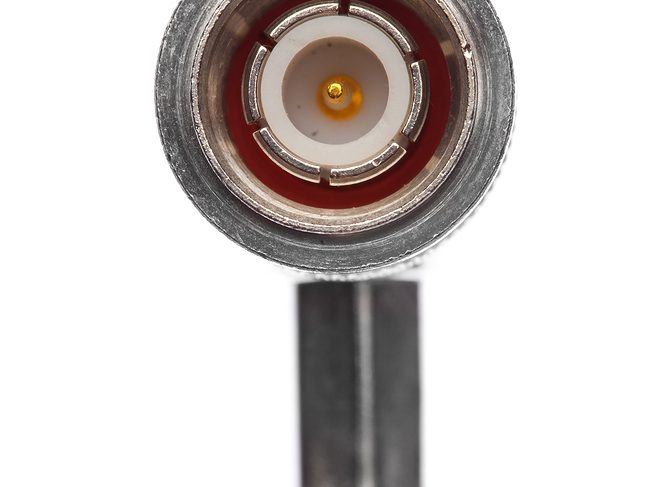
Full Duplex DOCSIS could bring symmetrical multi-gigabit service
BOSTON – Seeking to compete with fiber-related technologies that enable downstream and upstream speeds of 10 Gbps or more, cable engineers are now looking at crafting a fully symmetrical, multi-gigabit version of the industry's new DOCSIS 3.1 broadband spec even as DOCSIS 3.1 deployments just get off the ground.
Known as "Full Duplex DOCSIS 3.1," the proposed tech standard would permit cable operators to deliver both downstream and upstream speeds of up to 10 Gbps to broadband customers over the industry's hybrid fiber-coaxial (HFC) networks, with the potential for even higher speeds if operators have more RF spectrum available. If that goal is achieved, it would amount to a major upstream speed increase over the current DOCSIS 3.1 spec, which can support downstream speeds as high as 10 Gbps but upstream speeds that top out at just 2 Gbps.
Framing it as an "incremental evolution" of the DOCSIS 3.1 spec, CableLabs announced the move to its MSO members behind closed doors at its Orlando winter meetings in February. But, as word began to trickle out about it, the cable R&D group went public about the effort even though it's still in the very early, exploratory stages and may not even make it to the more concrete spec-writing phase.
Writing in a blog post on the CableLabs web site, Belal Hamzeh, VP, Wireless, R&D, and Dan Rice, SVP, R&D, explained that Full Duplex would apply "emerging techniques from wireless networks to achieve a breakthrough increase in the upstream speeds" for DOCSIS 3.1. Specifically, they wrote, Full Duplex would make use of both Frequency Division Duplexing (FDD) technology and Time Division Duplexing (TDD) technology to enable upstream and downstream traffic to use the same spectrum at the same time, thus doubling the efficiency of spectrum use. As a result, they continued, a DOCSIS 3.1 Full Duplex network would deliver "the peak speeds and flexibility of TDD solutions, but one-ups both TDD and FDD with double the capacity."
The proposed Full Duplex spec would also seek to leverage "deep fiber" builds by cable operators, splitting fiber nodes and cutting down on the size of service groups. With the service groups reduced to small, PON-size proportions, cable operators could then eliminate active electronic devices like signal amplifiers and repeaters in their HFC networks and rely on passive optical signals to deliver data and video. At the same time, operators would still not have to spend heavily to extend fiber lines all the way to customer homes and offices, thus sparing their capital expense budgets.
With Full Duplex still in what Cablelabs calls the exploratory "innovation" phase, a special team of Cablelabs, MSO and vendor engineers is now working on validating and developing the technology. If all goes well by the end of June, Hamzeh and Rice wrote, "the project will transition from an innovation effort into an R&D project, open to all interested participants."
“We are seeing better results than anticipated and it is looking incredibly strong.” – Phil McKinney, CableLabs
While Full Duplex hasn't advanced to the spec-crafting stage yet, the momentum behind it clearly appears to be building. Speaking at the cable industry's annual INTX show here last week, CableLabs CEO Phil McKinney said the odds are looking good that the technology will advance to the more serious spec-writing stage in the next 45 days. "We are seeing better results than anticipated and it is looking incredibly strong," McKinney said.
Also at INTX, Nokia showed how Full Duplex could work, staging a proof-of-concept demo that delivered symmetrical speeds of 10 Gbps over a coax connection. Calling the prototype solution XG-CABLE, Nokia said it can deliver the symmetrical 10-Gig speeds over a 100-meter length of coax using 1.2 Ghz of RF spectrum. The solution is also compatible with DOCSIS 3.1.
Although Nokia is not working with CableLabs yet, the company has engaged with several major cable operators in both North America and Europe to explore the possibilities of deploying Full Duplex technology, said to David Eckard, CTO of fixed networks. Eckard acknowledged, though, that this task won't be easy. "This Full Duplex operation is extremely challenging, with challenges both in the analog domain and also in the digital," he said.
However, the concept is very similar to one that Nokia has already introduced in telco copper network environments with DSL. Plus, Nokia can bring its expertise both in echo cancellation and in interference management from the DSL world into the cable realm.
Nokia is not the only vendor placing its bets on Full Duplex. Kumu Networks, which has been running Full Duplex trials with wireless carriers, says CableLabs approached it about applying the technology to cable networks about a year ago.
Joel Brand, vice president of product management at Kumu Networks, explained how Full Duplex works. "[Imagine] you have a device that sits between your mouth and your ear," Brand said in a recent interview, "and when you speak, that device applies the same principle of the noise-cancelling headset, and it cancels the noise that you're speaking such that you don't hear what you're saying. If you don't hear what you're saying, you can listen better to everything that comes from the environment."
Even if Full Duplex advances to the spec-writing phase, it will likely take the cable industry at least three to four years to craft the standard, develop the equipment for it and start deploying that equipment on its networks. So don't expect it to show up on cable networks until 2020 or so. But McKinney insists that the timing might turn out to be quicker than that if all goes well.



